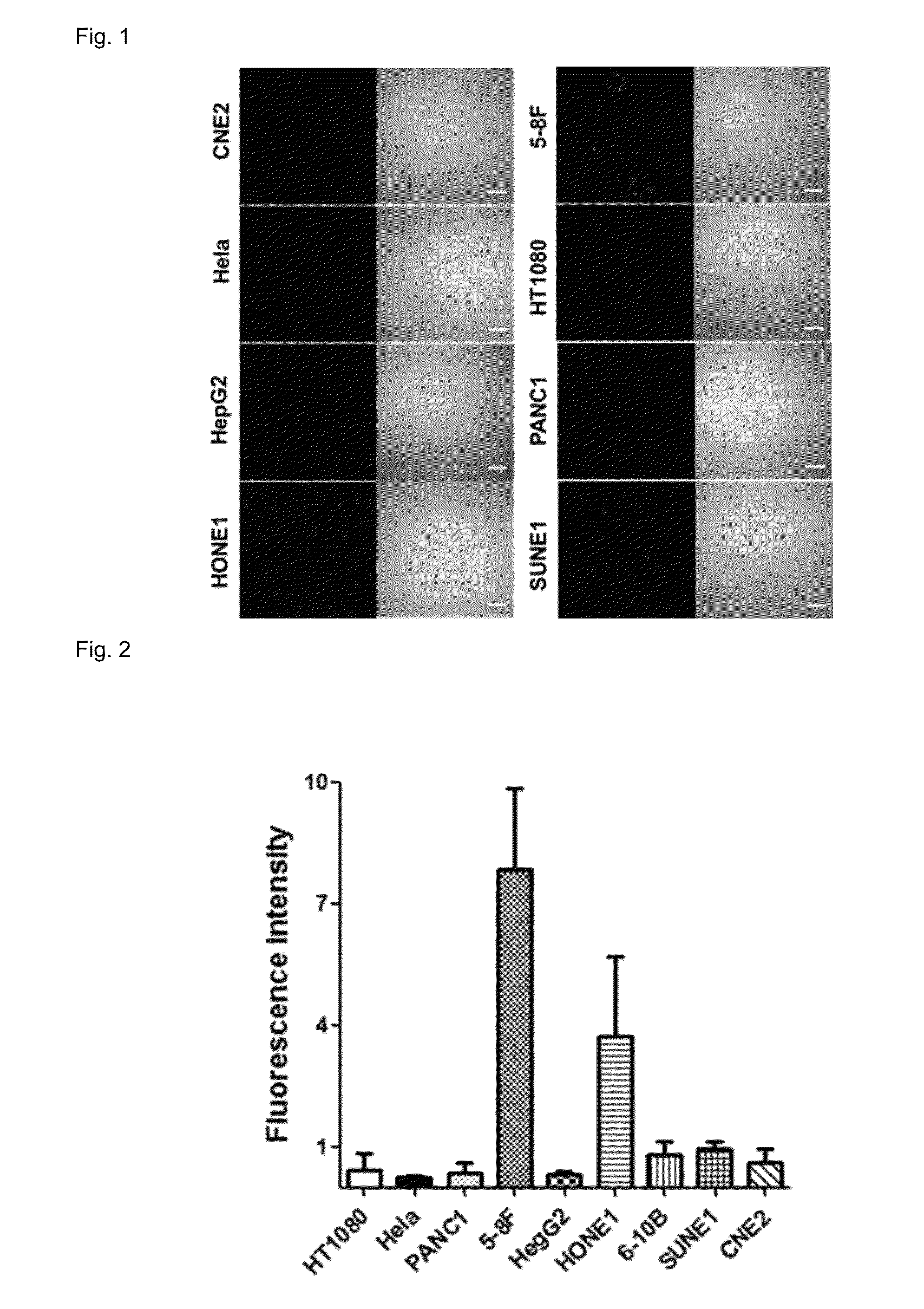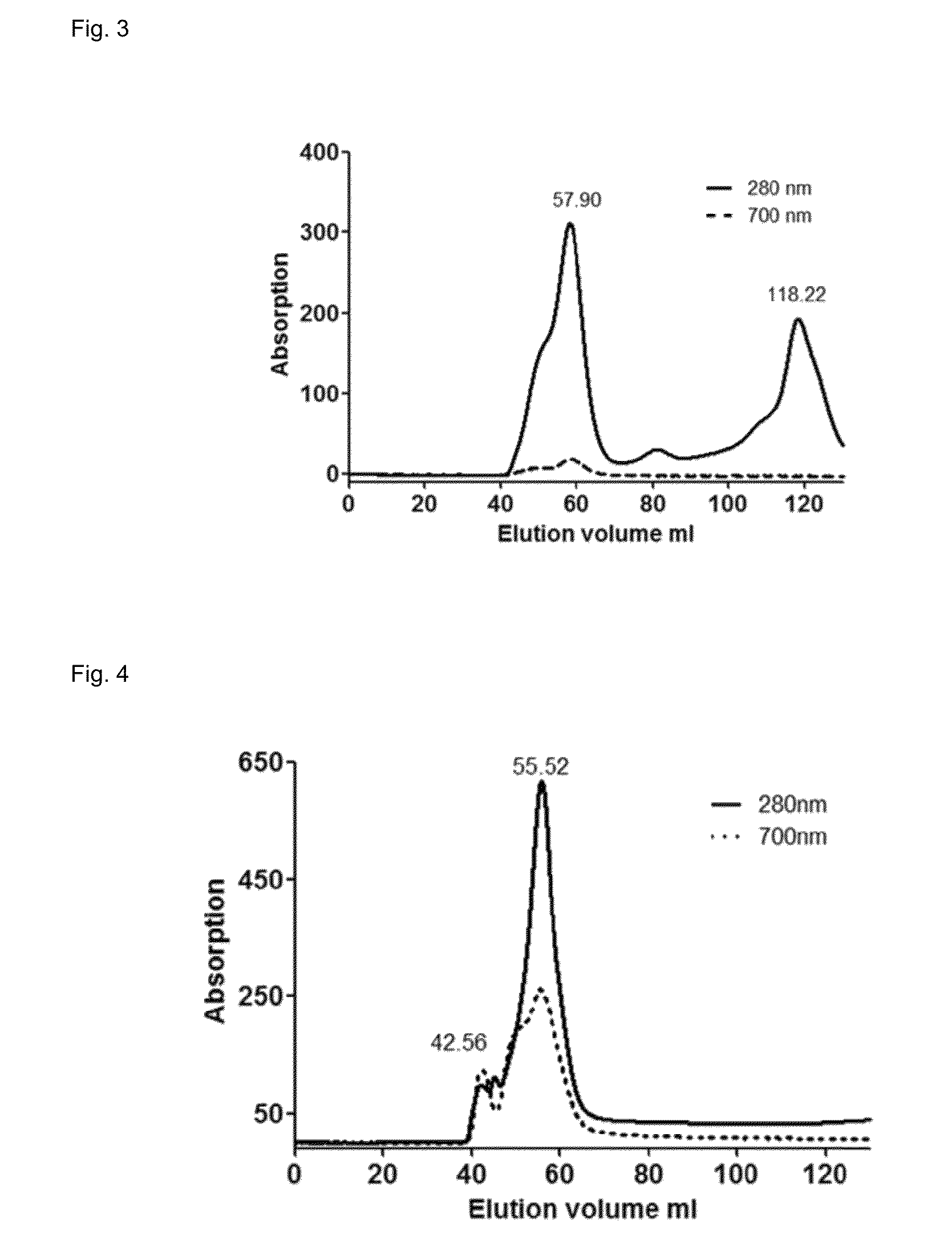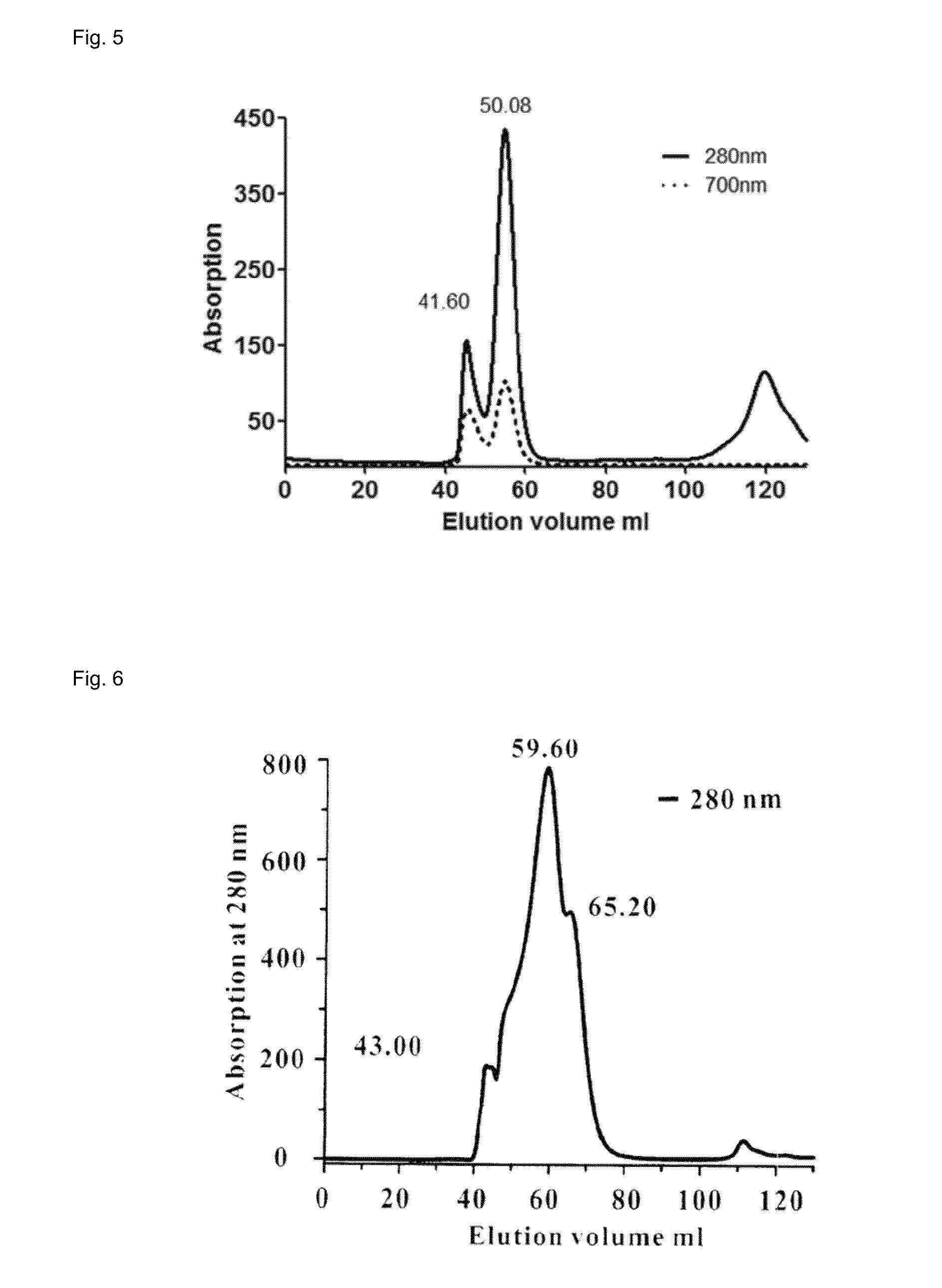Dual-targeted therapeutic peptide for nasopharyngeal carcinoma, nanoparticles carrying same and uses thereof
a nasopharyngeal carcinoma and nanoparticle technology, applied in the field of bioscience and drug carriers, can solve the problems of fluctuating year-to-year survival rate of nasopharyngeal carcinoma patients, difficult surgery for patients to treat with surgery, radiotherapy and chemotherapy have serious toxic and side effects, etc., and achieve the effect of inhibiting the growth of nasopharyngeal tumor cells
- Summary
- Abstract
- Description
- Claims
- Application Information
AI Technical Summary
Benefits of technology
Problems solved by technology
Method used
Image
Examples
example 1
[0055]In this example, a peptide octavalent fluorescent nanoprobe based on tetramer far-red fluorescent protein was prepared by using a method for constructing a peptide fluorescent probe having a multivalent effect and a nanosized effect invented in the previous research. The probe was used to detect and screen different types of tumor cell lines, in order to screen and identify the tumor-targeting property of the peptide, LTVSPWYLTVSPWY (SEQ ID NO: 3). As shown from the results in FIG. 1, the peptide LTVSPWYLTVSPWY (SEQ ID NO: 3) not only has an excellent tumor-targeting property to nasopharyngeal carcinoma cells, but also can effectively induce the death of tumor cells. FIG. 2 shows the quantitative results of FACS flow cytometry after incubating different tumor cells with the Octa-FNP fluorescent nano-probe for 3 h. It can be seen that the octavalent fluorescent nanoprobe based on the peptide LTVSPWYLTVSPWY (SEQ ID NO: 3) is more likely to be absorbed by nasopharyngeal carcinoma...
example 2
[0056]In this example, two specifically targeted therapeutic peptides for nasopharyngeal carcinoma, LTVSPWYLTVSPWY (SEQ ID NO: 3) and FAEKFKEAVKDYFAKFWD (SEQ ID NO: 2), were linked via a sequence of GSG to form a new dual-targeted therapeutic peptide for nasopharyngeal carcinoma (referred to as dtTPNPC). The complete amino acid sequence thereof is described as SEQ ID NO: 1 in the sequence listing.
[0057]Dual-targeted diagnostic and therapeutic nanoparticles for nasopharyngeal carcinoma (referred to as dtDTNPNPC) were prepared by using the dtTPNPC through the following steps:[0058]1) 3 μmol of DMPC (1,2-dimyristoyl-sn-glycero-3-phosphocholine) and 0.225 μmol of DiR-BOA (or 0.1 μmol cholesteryl oleate, referred to as C.O) in chloroform were fully mixed in a glass test tube, and the tube was sealed with parafilm;
[0059]2) the chloroform in the tube was blown off under a stable nitrogen flow so that the mixture in step 1) formed a thin film at the bottom of the tube;
[0060]3) the tube was ...
example 3
[0068]FIG. 10 shows the experimental results of the tumor cell-targeting properties of the Fluo-BOA or DiR-BOA core-loaded dtDTNPNPCs prepared in Example 2. Laser confocal imaging was performed after incubating nasopharyngeal carcinoma 5-8 F cells and lung cancer LLC cells respectively with 2 μmol (Fluo-BOA)dtDTNPNPC for 1 h, and the results show that the dtDTNPNPC are easier to be taken up by nasopharyngeal carcinoma 5-8 F cells. Also, laser confocal imaging was carried out after incubating nasopharyngeal carcinoma 5-8 F cells and human fibrosarcoma HT1080 cells with 2 μmol (DiR-BOA)dtDTNPNPC and (DiR-BOA)NP for 1 h respectively. The flow cytometry results show that the 5-8 F cells treated with (DiR-BOA)dtDTNPNPC have a significantly improved fluorescence intensity, compared with the blank control (as shown in FIGS. 11-12). As for the comparison of the targeting ability to tumor cells between the (DiR-BOA)dtDTNPNPC and the NP, the imaging results in FIG. 13 show that dtDTNPNPC can ...
PUM
| Property | Measurement | Unit |
|---|---|---|
| particle size | aaaaa | aaaaa |
| particle-size | aaaaa | aaaaa |
| particle size | aaaaa | aaaaa |
Abstract
Description
Claims
Application Information
 Login to View More
Login to View More - R&D
- Intellectual Property
- Life Sciences
- Materials
- Tech Scout
- Unparalleled Data Quality
- Higher Quality Content
- 60% Fewer Hallucinations
Browse by: Latest US Patents, China's latest patents, Technical Efficacy Thesaurus, Application Domain, Technology Topic, Popular Technical Reports.
© 2025 PatSnap. All rights reserved.Legal|Privacy policy|Modern Slavery Act Transparency Statement|Sitemap|About US| Contact US: help@patsnap.com



